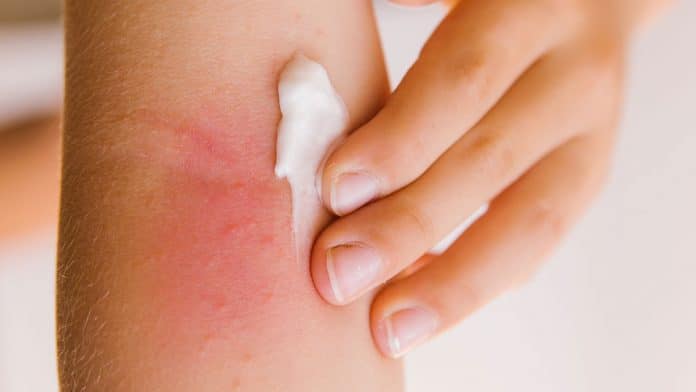If your skin is unusually red, tender or swollen, it’s most probably a case of cellulitis. Cellulitis is one medical condition that you should not wait to resolve on its own. Cellulitis is a common and sometimes painful bacterial skin infection. It may first appear as a red, swollen area that feels hot and tender to the touch. The redness and swelling can spread quickly.
It most often affects the skin of the lower legs, although the infection can occur anywhere on your body or face. Cellulitis is usually on the surface of your skin, but it may also affect the tissues underneath. The infection can spread to your lymph nodes and bloodstream.
Cellulitis symptoms include pain and tenderness in the affected area, redness or inflammation of your skin, a skin sore or rash that grows quickly, tight, glossy, swollen skin surface, a feeling of warmth in the affected area, an abscess with pus and fever. Symptoms like these could mean that cellulitis is spreading drowsiness, lethargy, blisters and red streaks.
Cellulitis occurs when certain types of bacteria enter the skin through a cut or crack. Staphylococcus and Streptococcus bacteria can cause this infection. The infection can start in skin injuries such as cuts, bug bites, and surgical wounds.
Cellulitis usually doesn’t spread from person to person. Yet it’s possible to catch cellulitis if you have an open cut on your skin that touches an infected person’s skin. You’re more likely to catch cellulitis if you have a skin condition like eczema or athlete’s foot. Bacteria can enter your skin through cracks that these conditions cause.
Consider watching this video to know what is Eczema.
A weakened immune system also increases your risk of catching cellulitis because it can’t protect you as well against the infection. Any injury, cut, fracture, burn, or scrape gives bacteria an entry point and uts you at an increased risk of cellulitis.
They have weakened the immune system. Conditions that weaken your immune systems — such as diabetes, leukemia, and HIV/AIDS — leave you more susceptible to infections. Certain medications also can weaken your immune system. Skin conditions such as eczema, athlete’s foot, and shingles can cause breaks in the skin, which give bacteria an entry point.
If your cellulitis recurs, your doctor may recommend preventive antibiotics. To help prevent cellulitis and other infections, take these precautions when you have a skin wound wash your wound daily with soap and water. Do this gently as part of your regular bathing. Apply a protective cream or ointment. For most surface wounds, an over-the-counter ointment (Vaseline, Polysporin, others) provides adequate protection. Cover your wound with a bandage. Change bandages at least daily.
Watch for signs of infection. Redness, pain, and drainage all signal possible infection and the need for medical evaluation.
Cellulitis treatment usually includes a prescription oral antibiotic. Within three days of starting medicine, let your doctor know whether the infection is responding to treatment. You’ll need to take the antibiotic for as long as your doctor directs, usually five to 10 days but possibly as long as 14 days. In most cases, signs, and symptoms of cellulitis disappear after a few days
Hence, it is wise to start treating cellulitis as soon as you notice the onset of the infection!
Until Next Time,
Team Doctor ASKY!





















